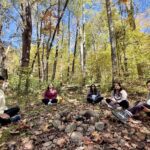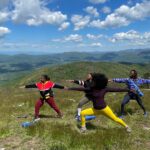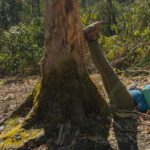“And into the forest I go, to lose my mind and find my soul.”
– John Muir
Have you ever noticed the senses of the forest? The sounds of rustling leaves on trees or a bubbling brook trickling by; the feel of sunlight through the canopy drawing your face toward the sky; the smell of moss and fresh, mountain air…these things give us a sense of awe. They ease our stress and worry, help us to slow down and move with greater intention and peace.
Being in nature can restore our mood, give us back our energy and vitality, refresh and rejuvenate us. But have you ever wondered why that is?
Understanding the science of nature might sound contradictory, but it’s the perfect balance where forest bathing can be found. If you’re new to the concept, let’s take a closer look at the practice in theory. When you’re ready, we would love to have you join us here in Western North Carolina for guided forest bathing to put this theory into practice!
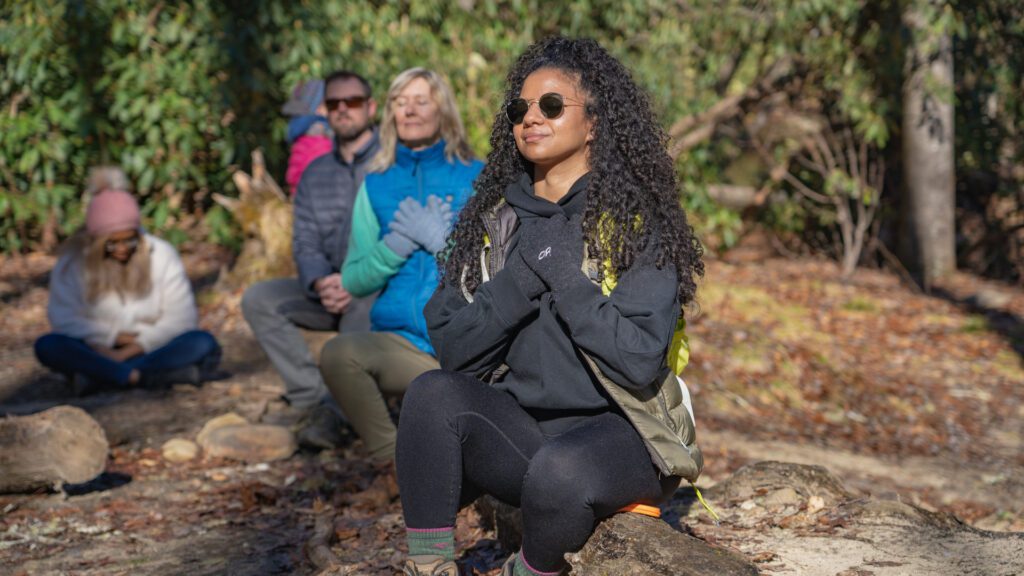
History of Forest Bathing
Forest bathing as a practice began in Japan in the 1980s as a means to improve health and wellbeing. It’s known as Shinrin-Yoku, which translates to ‘immersing oneself in the forest atmosphere’ or taking in the forest through our senses.
Bathing refers to sensory immersion; there’s no swimsuit required for forest bathing!
To the Japanese proponents, the intent behind forest bathing was twofold: to offer support to those experiencing burnout in the recent tech industry-boom, and to inspire residents to reconnect with and protect the country’s forests. It was an effort toward conversation of both humanity and the natural world, of which we’re an intrinsic part.

The Science Behind Forest Bathing
According to the Association of Nature & Forest Therapy Guides & Programs, forest bathing is linked to many health and wellness benefits. Some of these include reduced stress, improved mental clarity and creativity, and even boosted immune function (one that’s on everyone’s minds in today’s world!).
From the association: “Leisurely forest walks, compared with urban walks, show a 12.4% decrease in the stress hormone cortisol, a 7% decrease in sympathetic nerve activity, a 1.4% decrease in blood pressure, and a 5.8% decrease in heart rate.”
This shows that forest bathing seems to significantly mitigate the physiological root causes of stress. Excess stress can play a role in headaches, high blood pressure, heart problems, diabetes, skin conditions, asthma, and more.
The notion that forests have a special place in the realm of public health, including an ability to refresh the weary, is not a new one. In the mid to late 1800s, physicians Peter Detweiler and Hermann Brehmer set up sanatoriums in Germany’s pine forests, as did Edward Trudeau in the Adirondack forests of New York. All reported the benefit of the forest air.
Research completed in the hundred years since offers evidence to suggest that phytoncide, the natural chemicals secreted by evergreen trees, play a role in immune-support. Researchers have measured the amount of phytoncide in the air during studies and correlated the content to improvements in immune functioning.
The trees quite literally offer health benefits to us simply by being as they are!

And, in turn, the CO2 that we produce through exhalation supports the trees. A reciprocal relationship. What’s cooler than that?
Want to learn more? Check out the books FOREST BATHING: How Trees Can Help You Find Health and Happiness by Dr. Qing Li or Your Brain On Nature by Eva M. Selhub. And there are many more recommended readings from the Association of Nature and Forest Therapy.
Intrinsic Benefits of Forest Bathing
We love when science offers measurable results, but there are intrinsic benefits to this practice as well. Of course, some of them you’ll just have to feel for yourself.
One of our past guests said, “I was able to open my head and heart to new sensations and get into a much-needed relaxed place. The experience was very low-impact and our guide introduced us to focus on what our senses are taking in. I was able to detach from my busy world and just be in nature, sitting by the water and becoming less anxious. I slept like a baby that night!”What to Expect with Forest Bathing
Any time spent in nature is a gift. However, our forest bathing walks aren’t your average nature walk or a hike for fitness. If you’re looking for that, check out our yoga hikes instead.
During forest bathing, we won’t be identifying flora and fauna or moving quickly. The goal of forest bathing is to slow down, quiet our analytic brains, open our hearts, gently activate our bodies and awaken our senses.
This is done through a series of mindfulness invitations offered by your guide that provide opportunities for a truly unique experience, invitations that inspire wonder and awe in the young and young at heart.
We’ll explore the forest in a way that engages our senses and cultivates a deeper sense of mindfulness and gratitude for the natural world.
On this relaxing 2-3 hour walk, we’ll spend time in nature in a way that invites mindfulness and presence, with invitations aimed at enhancing mental and physical health, happiness and creativity.
Upon departure, we hope you have an enhanced appreciation for the natural world and a wellness practice that can be applied in your daily life.
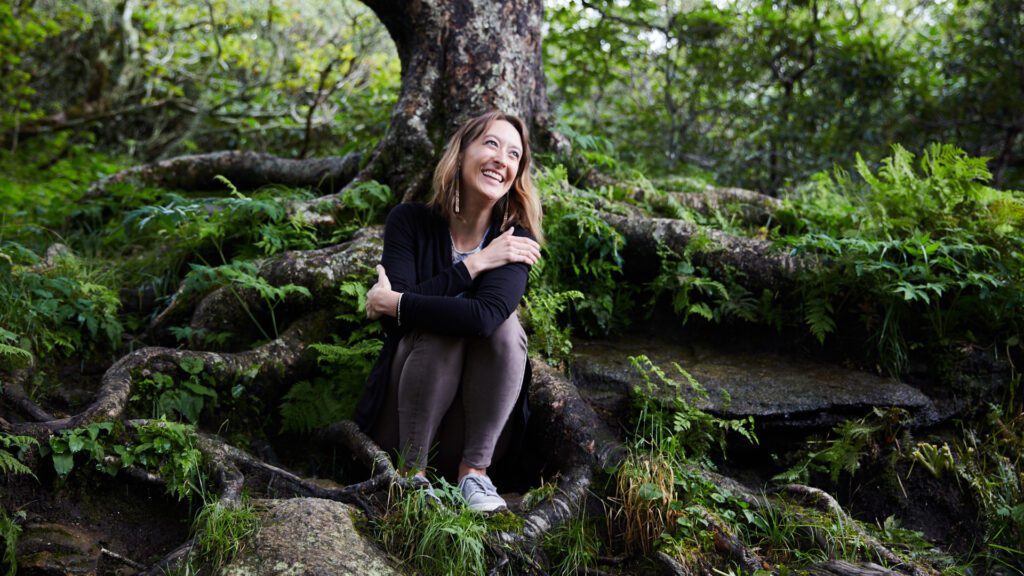
Who is this for?
Forest bathing is for everyone. Our circle is open to all; all are welcome in nature. Our walks are gentle and slow, suitable for every level of fitness. If you have special needs, we can adapt this practice to meet you where you are.
The beauty of forest bathing is that there’s no right or wrong way to participate. We invite you to be present and to be yourself. Families welcome!
Meet a Forest Bathing Guide
Kelly Bruce is a writer, freelance adventurer, and mermaid at heart. Born and raised in Florida, she fell in love with Appalachia while spending her summers in Hendersonville, NC, at her grandparents’ mountain house. Her career path includes journalism and communications, but her true passion is spending time in nature and inspiring people to get outside.
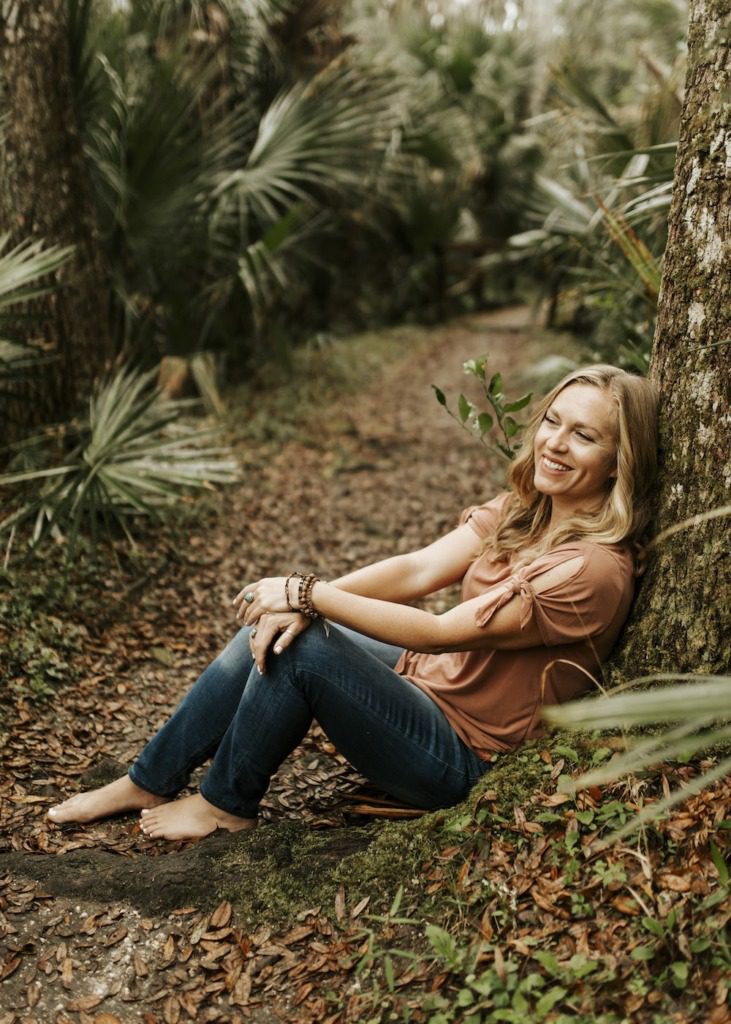
Her journey as a forest bathing guide began in 2016 in Colorado while teaching snowboarding and snowshoeing to people with various cognitive and developmental disabilities through an adaptive sports program. Often working with the visually impaired, she would turn their snowshoe walks into a sensory experience.
When she learned of forest therapy, she instantly felt called to become a certified guide and help people connect to the natural world in all seasons.
In 2018, she began her training in Sonoma, California, with the Association of Nature and Forest Therapy, followed by a six-month intensive practicum. In addition, Kelly is an ANFT Forest Therapy Trail Certification Consultant and a Certified Interpretive Guide with National Association for Interpretation. She is also Wilderness First Aid and CPR certified.
Kelly is thrilled to share the practice of forest bathing and nature therapy with Western North Carolina residents and visitors because she believes enhanced nature connection leads to a deeper appreciation of Mother Earth. In her free time, she loves exploring with her hound dog, fly fishing, stand up paddle boarding, camping, and hiking here in the beautiful Blue Ridge Mountains.
If you’re ready to immerse yourself in nature and open yourself up to the power of nature therapy, join us for a forest bathing experience near Asheville. We would love to help you enjoy all the benefits and wonders of this practice! Feel free to reach out if you have any other questions.


